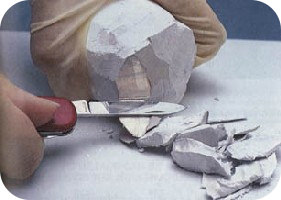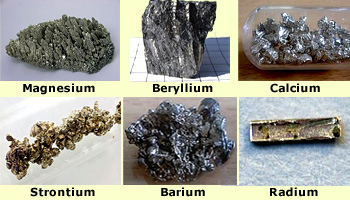According to the Oddo-Harkins rules elements having even atomic numbers are more common than those elements who have odd atomic numbers but there is an exception for hydrogen. The rule argues that one unpaired proton in the odd atomic numbers is more likely to capture another one and hence the atomic number is increased. The elements who have even atomic numbers their protons are paired and each member of the pair offsets the spin to the other and enhances the stability.
The occurrence of Group I Elements
All of the alkali metals have the odd atomic numbers and they are not much common than the elements having even atomic numbers such as elements adjacent to them such as alkaline earth metals and the noble gasses in the solar system. Alkali metals with heavy weights are less abundant than the metals with lighter weight. The alkali metals from rubidium to onward cannot be synthesized in the stellar nucleosynthesis but by the supernovae. Lithium is too less abundant than sodium and potassium as lithium is poorly synthesized in both the stars and big bang nucleosynthesis.

All the alkali metals occur in nature as their compounds. However, they do not occur freely as they are most reactive. Alkali metals are lithophiles and are close to the surface of the earth as they readily combine with oxygen and strongly associated with silica thus forms the minerals of relatively low density so they do not sink to the core of the earth. Among these elements, sodium and potassium are the most abundant ones and are among the ten most common elements in the Earth’s crust. Sodium is the most commonly found alkali metal. Francium is the rarest element as it is highly radioactive and it occurs in minute amounts may be called traces in nature but as an intermediate step in some of the obscure side branches of natural decay chains.
The occurrence of Group II Elements
The elements in group II of the periodic table are silver metals and are soft in nature. In character, they are less metallic than the group I metals. In Earth’s crust, beryllium occurs at the concentration of two to six parts per million (ppm) much of it is present in the soils where its concentration is 6 ppm. In seawater it is one of the rarest elements, however, it is more common in the fresh water with the concentration of 0.1 parts per billion.

Whereas magnesium and calcium are very common and are 5th and 8th most abundant element respectively. The alkaline earth metals are not found in the elemental state. Common forms of the magnesium are magnesite, dolomite, and carnallite. Whereas common minerals containing calcium are limestone, gypsum, and chalk. Strontium is the 15th most abundant element and its principal minerals are strontianite and celestite. However, barium is less common and it is found in the barite mineral. Radium is produced by the decaying of uranium and it is found in all of the uranium-bearing ores.